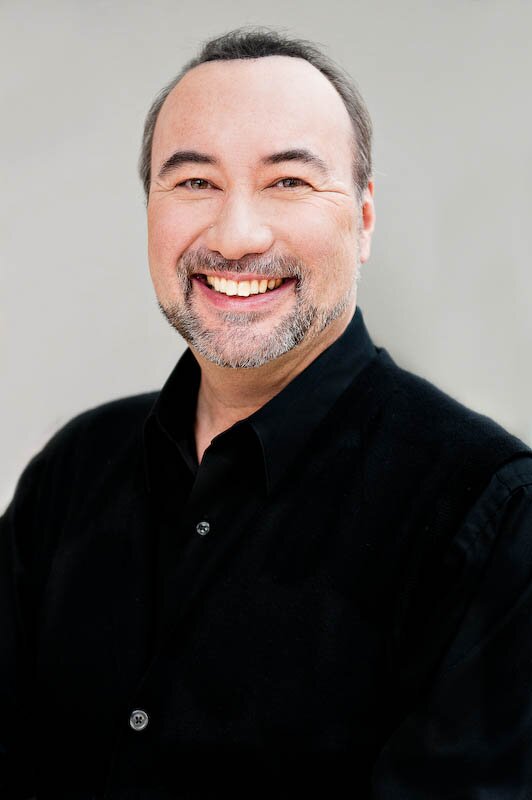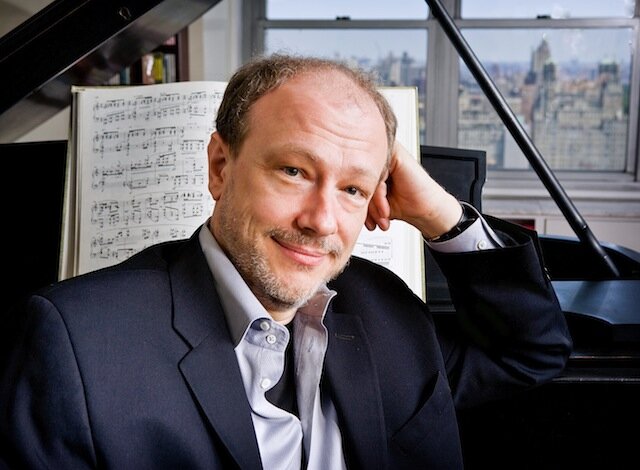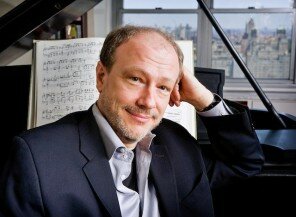Put Mussorgsky’s Pictures at an Exhibition on any piano recital program and you know it’s a big piece. Add some Rachmaninoff to that—well, he’s known for lavishly harmonized pieces with lots of notes. What about a Prokofiev sonata as well? A really fast and tricky one? This is already a tough program for the pianist.
But, Wednesday night on the UW President’s Piano Series, Jon Kimura Parker capped it by playing all these works and including his own transcription for one person of Stravinsky’s complicated orchestral work, The Rite of Spring. The evening was an awesome physical feat for any performer, but at the very end, Parker’s fingers were as nimble, as accurate, his touch as relaxed, his playing as clean and rhymic as it all had been at the start. And after it, he played an encore, a quiet, rippling Rachmaninoff prelude.
Prokofiev’s dynamic Sonata No. 3 in A Minor, which changes moods continually in its packed eight minutes, was just a well-played curtainraiser for The Rite of Spring.
I confess to having had misgivings about what The Rite would sound like on the piano. What about all the changes in instrumental timbre, the emphasis and the meaning of using one instrument over another that Stravinsky built into it?
Stravinsky had written a piano four-hands version for use in ballet rehearsals in 1913, but left out many of the colorful details. Parker had discovered this in college, he told the audience, persuaded friends to play it with him, and tried to add in the left-out bits. Eventually his friends said, in effect, Do it yourself, and in 2004, he did, working out the logistics of putting an entire orchestral score into ten fingers, including cross rhythms and dynamics in different fingers. At times, he said, it would have been useful to have seven or eight hands. He managed amazingly with two.
I ate my misgivings as I listened to his performance. Yes, the eerie sound of the high bassoon wasn’t there, but instead what we heard were all sorts of inner details of harmony that often get obscured in the sound and propulsion of the orchestra performance.
Parker rarely pounds the piano, only when the music demands it, and even then it is still music, not key-bashing. It was a riveting experience to watch him play this familiar work and what he did with those ten fingers as the work bloomed under them into its tale of spring rising and human sacrifice. He conjured up bell-like sounds, savage sounds, peace or spikes or agitation and a multitude of rhythmic changes. It never sounded as though it was hard to do as he transcended the difficulties and created a musical experience. At times when there was a pause in the music—once long enough for him to wipe the sweat off his face with a red handkerchief—not a sound emanated from the audience.
In intermission, I said to a colleague, I’m exhausted for him. She agreed and said she expected Parker was soaking his hands in cold water at that moment.while I thought he must be doing it lying down because, after intermission, the rest of the program was almost as challenging.
He began with Rachmaninoff’s Prelude in G Minor: thoughtful, crisp and clean becoming dreamy and smooth and back again. Then, as with The Rite, he talked a bit to the audience about Pictures at an Exhibition. In contrast to The Rite, Mussorgsky intended this solely for piano, and it was orchestrated by several renowned composers after.
In this second extremely familiar work, Parker showed no fatigue as he painted in music the pictures at his friend Hartmann’s exhibition. He brought out the children’s shrill voices, the chicks’ little beaks tapping their shells, the argumentative discussion between the two Polish Jews, the gloom of the Catacombs, the weirdness of Baba Yaga’s hut and the majesty of the Great Gate of Kiev, all joined with the everchanging Promenade.
It was another enthralling performance and at the end, Parker’s playing was as precise and clean as at the start. Only a couple of times did I wonder if he had blurred a note. Parker, now 53, is still at the height of his powers, a consummate musicians’ musician who appeals equally to audiences. This was an extraordinary concert, one to remember and savor. And to savor it further, you can find his transcription of The Rite recorded by him this year, in honor of the work’s centenary.



